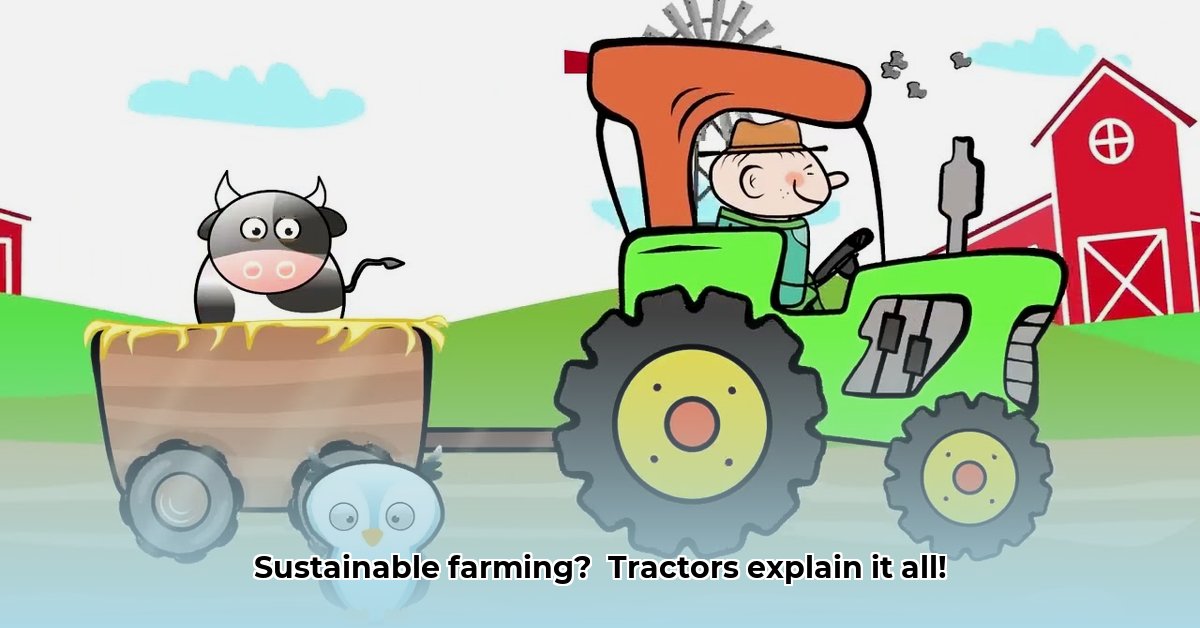
Tractor Cartoon Drawing: A Symbol of Sustainable Agriculture
A simple cartoon drawing of a tractor might seem trivial, but it can powerfully illustrate the shift toward sustainable agriculture. This image transcends its childlike charm, representing the evolution from traditional, resource-intensive farming to a more technologically advanced and environmentally conscious approach. This article explores how smart farming techniques, symbolized by our cartoon tractor, are revolutionizing agricultural practices, benefiting both farmers and the planet. It examines the technological advancements driving this change, addresses the challenges involved, and proposes a framework for broader adoption. For those interested in DIY farming tools, check out this homemade plow design.
Smart Farming: Precision and Efficiency
Modern sustainable agriculture revolves around precision farming, a concept perfectly embodied by our technologically enhanced cartoon tractor. Instead of broad-spectrum applications of fertilizers, pesticides, and water, precision farming employs technology to target these resources precisely where needed. GPS-guided tractors, for example, ensure that pesticides are sprayed only on the affected areas, minimizing environmental impact and reducing costs. "This targeted approach is a game-changer," says Dr. Anya Sharma, Agricultural Engineer at Cornell University. "It's like giving each plant exactly what it needs, maximizing yield while minimizing waste." This precision extends to water management, with sensors monitoring soil moisture levels to optimize irrigation. The result is higher yields, reduced resource consumption, and a minimized environmental footprint.
How can precision farming strategies improve crop yields per acre? Studies show a 10-20% increase in yield and a 20-30% decrease in input costs for farms successfully employing precision agriculture techniques. This efficiency is particularly crucial in water-stressed regions where water conservation is paramount.
Beyond the Tractor: A Technological Revolution
Smart farming goes beyond GPS-guided tractors. Drones now monitor crops, providing high-resolution imagery that allows for early detection of diseases, nutrient deficiencies, and pest infestations. This early warning system enables timely interventions, preventing larger problems and minimizing losses. Furthermore, artificial intelligence (AI) analyzes vast amounts of data—including weather patterns, soil conditions, and historical yields—to optimize planting strategies and predict future harvests. "AI-driven farming is transforming decision-making," explains Dr. Ben Carter, Professor of Agricultural Informatics, University of California, Davis. "It allows farmers to make data-driven choices, leading to greater efficiency and profitability."
Challenges on the Path to Sustainable Farming
Despite the benefits, the transition to sustainable agriculture faces significant challenges. The high initial cost of implementing new technologies can be prohibitive for smaller farms. Moreover, a lack of access to training and technical support hinders the effective utilization of these advancements. Also, the potential long-term environmental impacts of certain technologies, such as the potential effects on soil health and biodiversity, require further investigation. "We need a holistic approach," emphasizes Dr. Maria Rodriguez, Soil Scientist, University of Minnesota. "Sustainable practices must not only improve yields but also protect the health of our ecosystems for the long term."
Collaboration: The Key to a Sustainable Future
Overcoming these challenges necessitates a collaborative effort. Governments can provide financial incentives and support for smaller farms adopting sustainable practices. Research institutions must continue developing affordable and user-friendly technologies. Private companies need to prioritize accessibility and ease of use in their product design. Furthermore, open communication and knowledge sharing among farmers are crucial to accelerating innovation and problem-solving. The transition to sustainable agriculture isn't about replacing farmers with robots; it's about equipping them with the tools and knowledge to work smarter, more efficiently, and in harmony with the environment. This collaborative approach will ensure a sustainable and equitable future for agriculture.
A Simple Cartoon with a Powerful Message
Ultimately, the cartoon tractor is more than just a cute image; it symbolizes the potential of sustainable agriculture. It bridges the gap between complex technology and the realities faced by farmers, making the transition to sustainable farming more relatable and understandable for a broad audience. This simple yet powerful visual reinforces the message that the future of farming – a future of greater productivity and environmental responsibility – is within our reach. The collective effort to achieve this future is a shared responsibility.